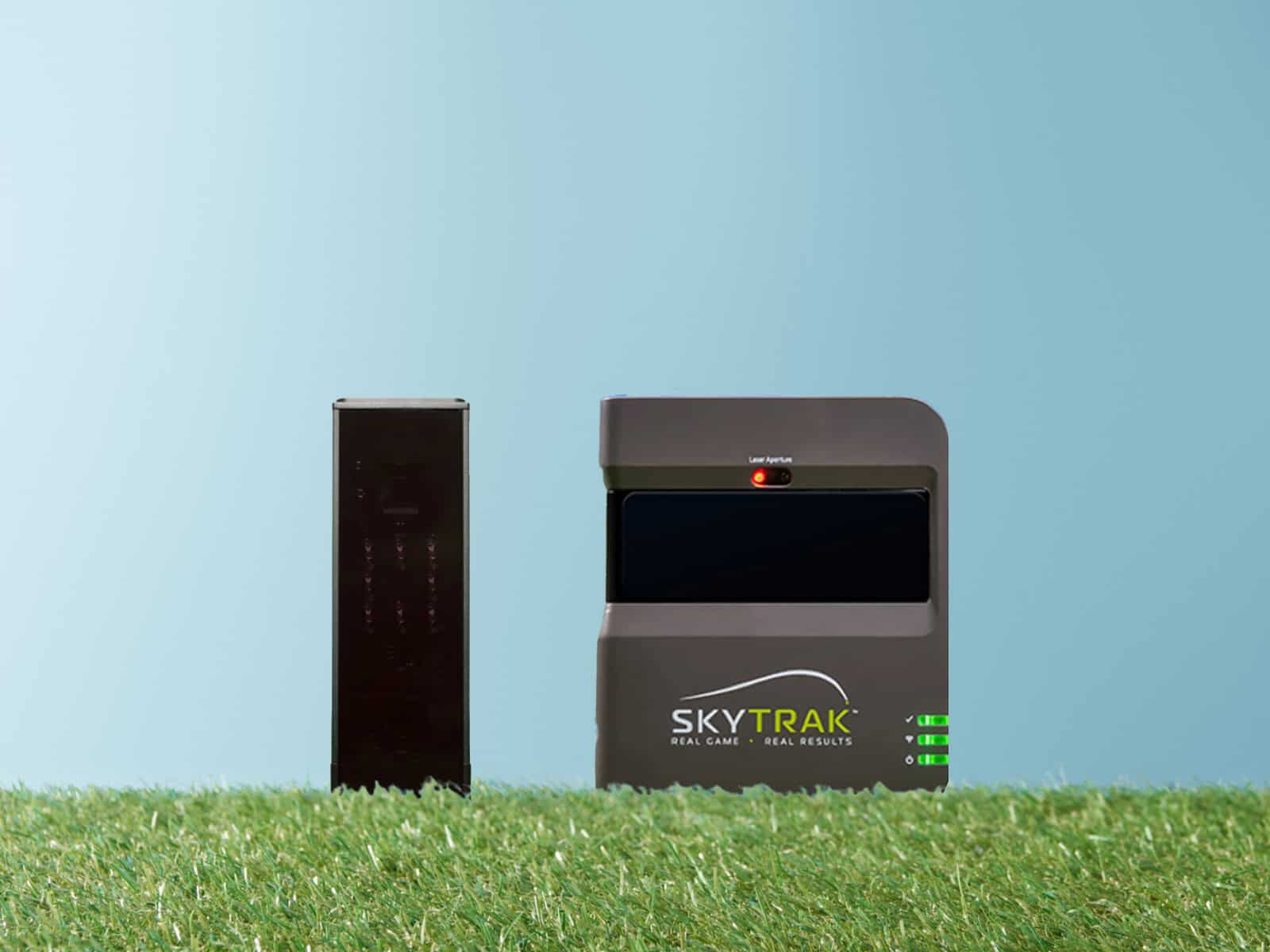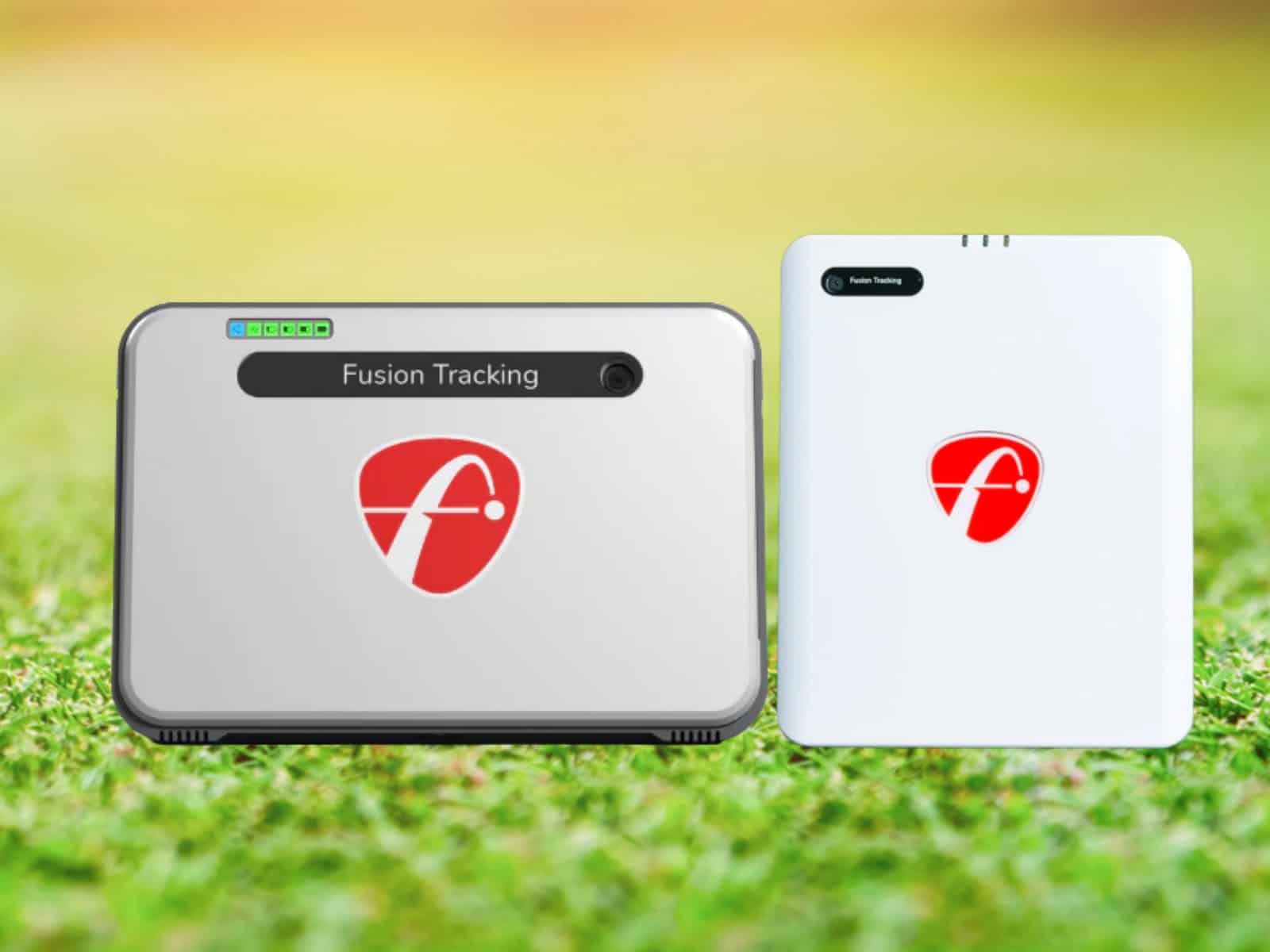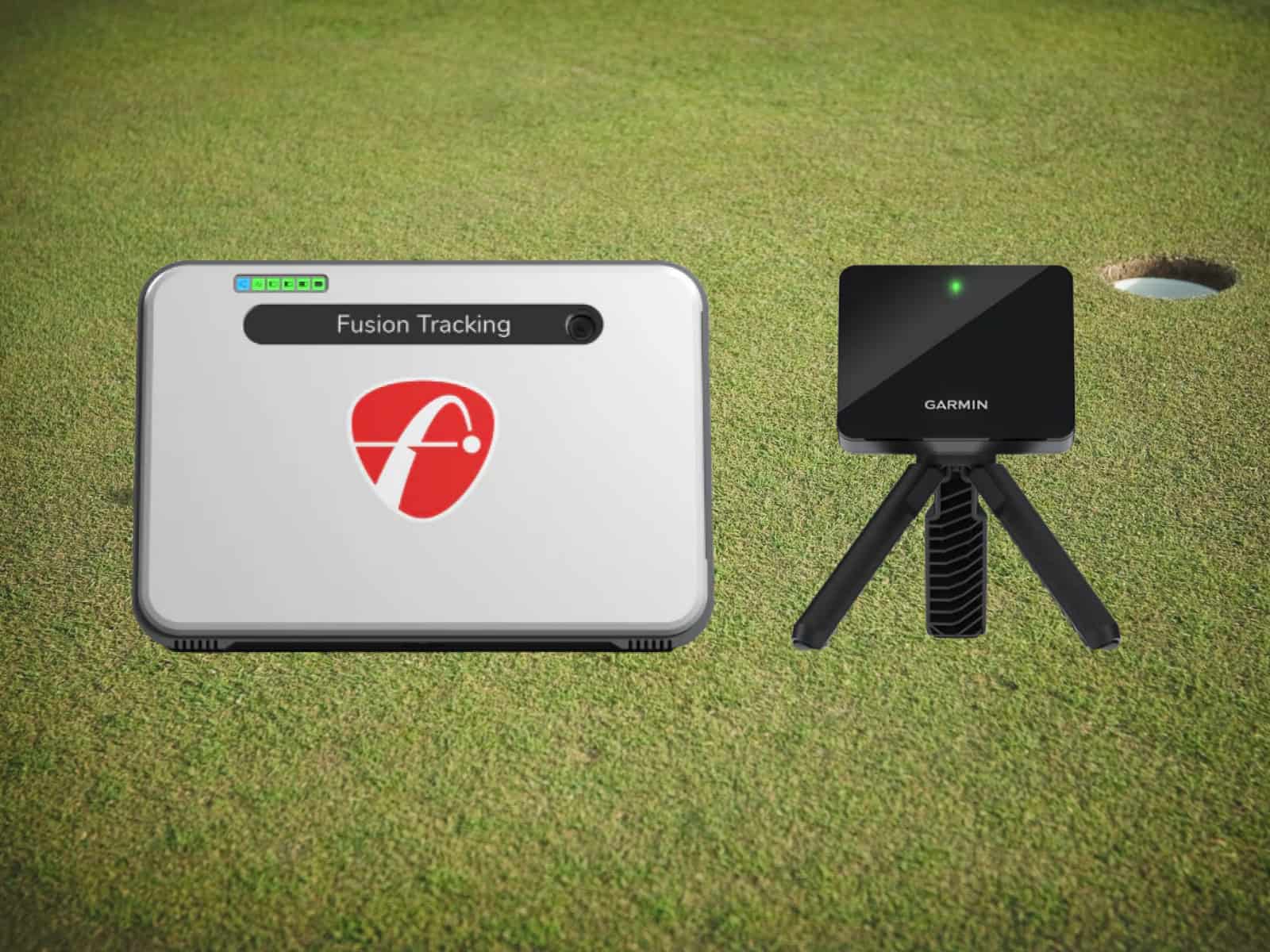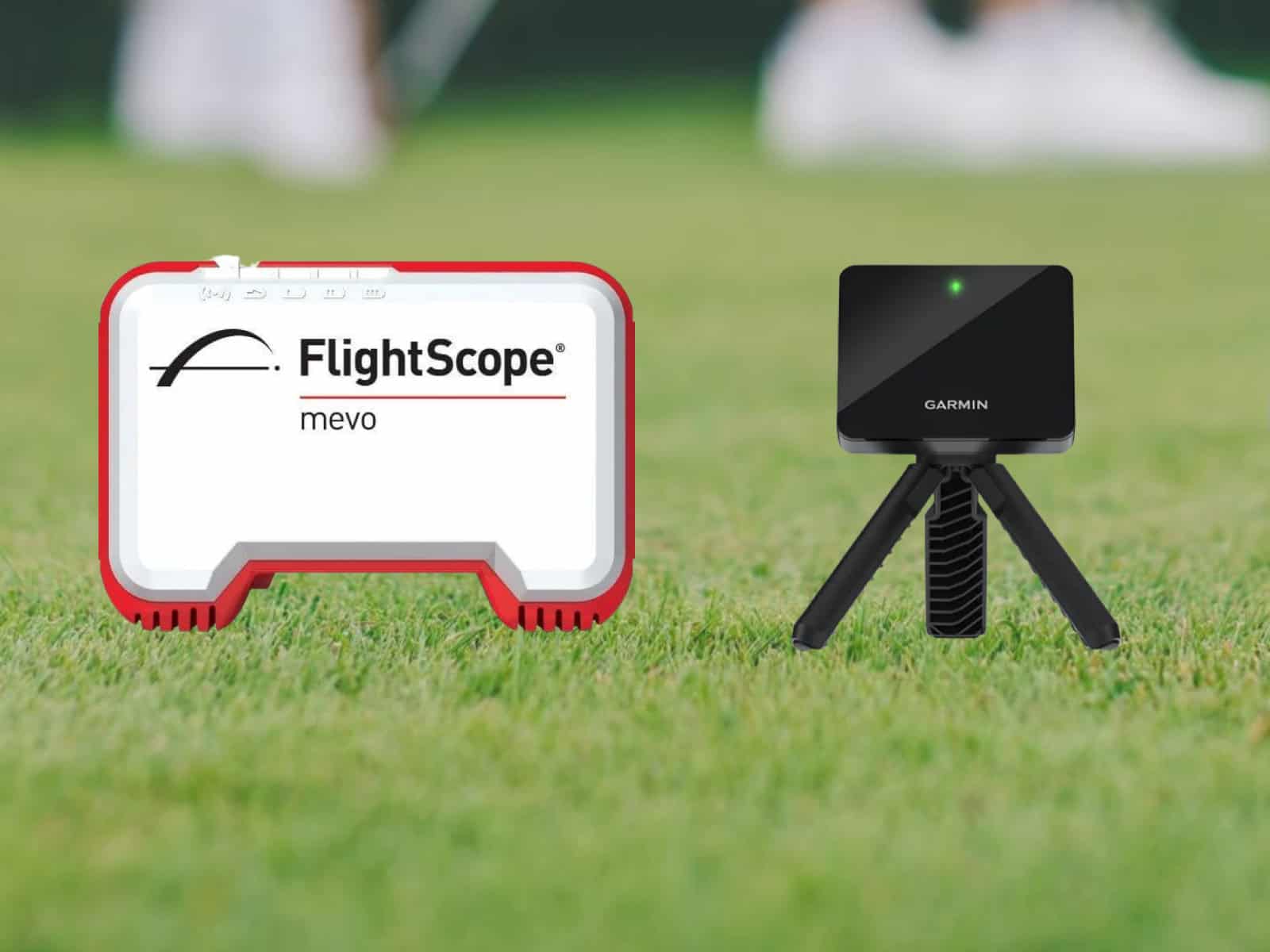The Square Launch Monitor and the Original SkyTrak are two of the most talked-about golf launch monitors on the market. But which one is right for you? Is the newer Square model a better choice, or does the trusted SkyTrak still hold its ground, even after more than a decade after its release?
This guide breaks down the key differences, from accuracy and technology to software features and pricing. By the end, you’ll know exactly which launch monitor fits your game, budget and expectations. Let’s get started.
Why Not Compare Square to the Newer Skytrak +?
We decided to compare this new launch monitor to the original Skytrak because the two are relatively close in their price points. It wouldn’t be fair to compare a $700-device (Square) to a $3K unit (Skytrak +).
Even though the original Skytrak is starting to show its age, it is still more expensive than the Square launch monitor. However, it can be found for around $1,000 if you look in the right places (making it a little closer in price to the Square).
With that said, we invite you to check out our detailed review of the Skytrak+ launch monitor if you’re interested in knowing more about that excellent device.
Square Launch Monitor vs. Original SkyTrak: Key Differences
The Square Launch Monitor and the Original SkyTrak both offer data-rich analysis, but they go about it in their own way. The question isn’t which one is better. It’s which one fits your game.
A Quick Look at Both Launch Monitors
The Square Launch Monitor is the newer player in town, built with modern sensors and a sleek, portable design. It focuses on real-time shot analysis and seamless connectivity, making it easy to track progress from anywhere.
SkyTrak, on the other hand, has already earned its reputation as a dependable, camera-based system. It’s precise, deeply integrated with simulation software and trusted by countless golfers.
Who These Devices Are Built For
If you want something lightweight and tech-forward, Square might be your answer. If you’re looking for a well-established, high-accuracy option that works with a variety of golf sims, SkyTrak has the edge.
Key Differences That Matter
The technology inside these devices tells two different stories. Square relies on next-gen tracking sensors, built for instant feedback. SkyTrak, with its high-speed cameras, captures every detail of your shot with pinpoint accuracy. One leans into portability, the other thrives in a controlled indoor setting.
But let’s be honest—numbers and specs don’t matter if the device doesn’t help you improve. So the real question is, which launch monitor will make the biggest difference in your game?
Accuracy and Data Tracking
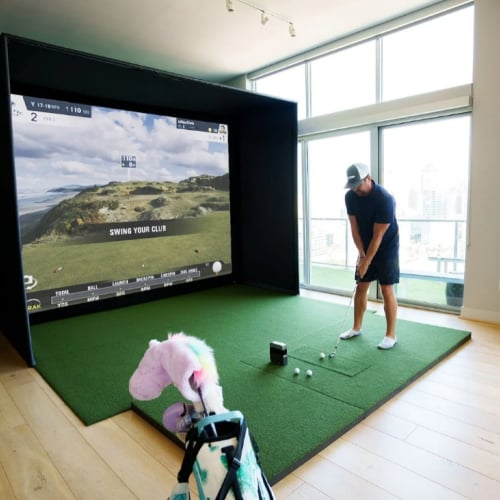
A launch monitor is only as good as its accuracy. If the data is off, every adjustment you make is based on bad information. That’s a quick way to ingrain the wrong habits.
Ball and Club Data Measurements
The Square Launch Monitor uses dual high-speed cameras and infrared sensors to capture shot data. This setup allows it to track ball speed, launch angle, spin rate, and carry distance in real time. Unlike radar-based monitors, Square relies on visual tracking, making it more effective indoors where lighting and controlled conditions improve accuracy.
SkyTrak also uses a high-speed camera system, but with a more established algorithm. It tracks similar data points and has been refined through years of software updates. Since both devices use optical tracking, they require proper lighting and setup to get the most accurate readings.
Shot Tracking Precision
Both monitors provide solid accuracy, but there are some differences. SkyTrak has a long-standing reputation for consistent spin and launch angle readings, while Square is newer and still receiving firmware updates to refine its data capture.
One key factor is marked vs. unmarked balls. Square delivers the most reliable spin readings when using marked balls, whereas SkyTrak doesn’t require them.
During our tests, we noticed that Square occasionally misreads spin axis or provides slightly inflated backspin numbers when using unmarked balls.
Indoor vs. Outdoor Performance
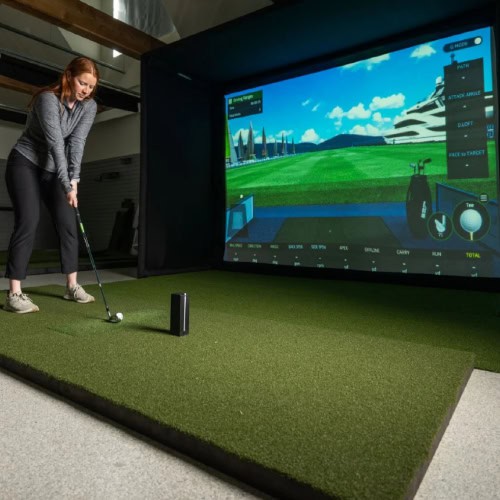
Since both Square and SkyTrak use camera-based tracking, they perform best indoors. Square does have faster shot processing, which means minimal delay between impact and feedback—something SkyTrak users have often criticized.
When taken outside, lighting conditions can impact both devices. Too much sunlight or poor contrast between the ball and background may lead to occasional misreads. SkyTrak can handle outdoor use with proper setup, while Square was designed for indoor use only.
Factors Influencing Accuracy
Getting precise data isn’t just about the launch monitor itself. Alignment, ball placement, lighting, and ball type all play a role. Square includes an alignment stick to help with setup, reducing errors caused by misalignment. SkyTrak requires manual alignment adjustments, which some may find frustrating.
For golfers focused on dialing in their numbers, using marked balls with Square and ensuring a well-lit, controlled environment for either monitor will yield the best results. The more dialed-in your setup, the more reliable your data.
Technology and Sensors
The sensors that track your ball flight, spin and launch angle determine whether you get data you can trust—or numbers that lead you down the wrong path. Square and SkyTrak take different approaches to measuring your shots, and that difference matters.
Differences in Launch Angle, Spin Rate and Ball Speed Tracking
Both monitors capture ball speed, spin rate and launch angle, but differences exist. Square tends to read higher backspin numbers, especially when unmarked balls are used. Usually, switching to marked balls improves spin accuracy, bringing it more in line with industry standards.
SkyTrak, on the other hand, has been known for its accurate launch angle and spin readings, particularly for full shots. However, its shot delay—sometimes up to two seconds—can be frustrating, especially when trying to analyze rapid shot sequences. Square’s faster response time makes it feel more practical during a practice session.
Which System Delivers More Reliable Data?
It depends on where you play and how you set up your space. Square offers faster feedback, but its accuracy improves significantly with marked balls and controlled lighting. SkyTrak, while slightly slower, has a proven track record of consistency, making it a safer bet for those who prioritize long-term reliability.
So the real question is, do you value instant feedback, or do you prefer a time-tested system with fewer variables to manage?
Software and Simulation Features

A launch monitor’s software can turn basic practice into an immersive training session. Square and SkyTrak offer different levels of simulation support, and those differences matter.
Compatibility with Golf Simulation Software
SkyTrak integrates with top-tier software like E6 Connect, TGC2019 and WGT, providing access to real-world courses and multiplayer modes. Many require paid subscriptions, adding to the overall cost.
Square supports GSPro, Awesome Golf and its own range software. GSPro stands out for realistic physics and affordability, making Square a strong option for budget-conscious golfers.
Game Modes and Training Features
SkyTrak offers structured training, including bag mapping and skill challenges. It tracks dispersion, helping you refine shot consistency.
Square focuses on instant feedback and ease of use. Its software delivers quick shot replays, trajectory views and club data. Unlike SkyTrak, it includes putting analysis, enhancing the full-game experience.
Third-Party Integration
SkyTrak excels in third-party software support, making it versatile for established simulator setups. Square is expanding fast, with GSPro integration being a major win. Frequent updates improve its compatibility, making it a growing contender.
SkyTrak’s interface is functional but feels slightly outdated. Setup requires manual adjustments, and shot feedback has a short delay.
Square’s modern software is faster and more intuitive. With minimal shot delay and easier setup, it provides a smoother experience.
Which One Offers the Best Simulation?
SkyTrak delivers more simulation options with proven software support. Square offers faster response times, GSPro access and putting support at a lower cost.
If you need broad software compatibility, SkyTrak has the edge. If you value speed, ease of use and affordability, Square is quickly closing the gap.
Portability and Setup
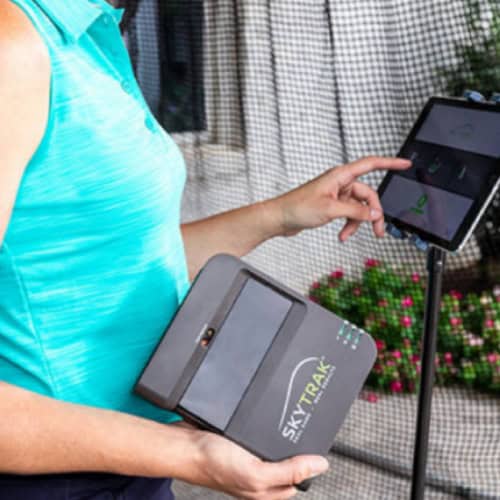
Portability and setup time impact how often you’ll actually use your launch monitor. Square and SkyTrak take different approaches to convenience.
Weight and Size Comparison
Square is light and compact (1 lb. & 7.48″ x 2.76″ x 2.76″), making it easy to move and store. Its slim design works well in tight spaces, and setup requires minimal adjustments.
SkyTrak, though not bulky, is a tad heavier and larger (at 1.7 lbs. and 5.75″ L x 6.75″ H x 2.5″ W). It’s still usable indoors and out, but its manual calibration process makes it less practical for frequent relocation.
Battery Life and Power Requirements
Square runs on a rechargeable battery, lasting up to eight hours on a full charge. That’s enough for extended practice sessions without worrying about power. SkyTrak also has a built-in battery, lasting around five hours. Both can be plugged in for continuous use.
Which One is Easier to Use on the Go?
If you need something portable, quick to set up and battery-efficient, Square is the better choice. If you’re keeping your launch monitor in one spot, SkyTrak works just as well—but if you plan to move it often, expect a little extra effort.
Connectivity and Compatibility
A launch monitor is only as useful as its ability to connect with your devices and software. Easy connectivity makes all the difference in your practice sessions.
Device Pairing: Wi-Fi, Bluetooth and USB
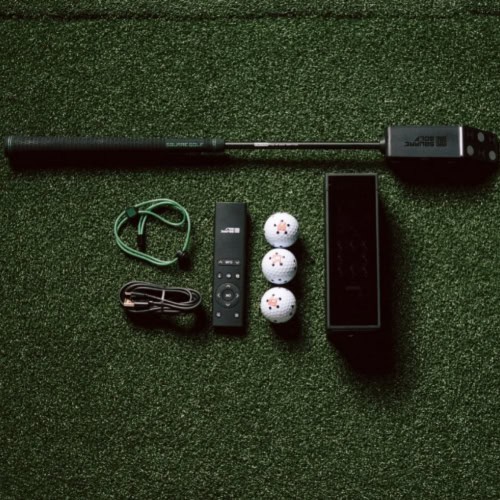
Square relies on Wi-Fi and Bluetooth for wireless connectivity. This makes it easy to sync with smartphones, tablets and PCs without the need for cables. Once connected, data transfers in real time, allowing for immediate shot analysis and feedback.
SkyTrak also uses Wi-Fi for device pairing, but it operates via a direct network connection rather than standard home Wi-Fi. This can improve stability but sometimes requires manual reconnection. Unlike Square, it does not support Bluetooth for quick pairing, which means mobile users must rely solely on Wi-Fi.
Compatibility with Smartphones, Tablets and PCs
Square is fully compatible with iOS, Android and PC platforms, making it a flexible option regardless of the device you use. It supports multiple apps and simulation software, allowing you to customize your experience based on your setup.
SkyTrak is also widely compatible but performs best on PC and iOS devices. Android support is available, though some users report performance inconsistencies. SkyTrak’s interface is more optimized for larger screens, making it a better fit for those using a laptop or tablet rather than a smartphone.
Cloud Storage and Data Analysis Options
Square offers cloud-based shot storage, allowing you to review past sessions and track progress over time. This is useful for serious golfers who want to analyze trends in their game.
SkyTrak also provides cloud data storage, but access to certain features requires a paid subscription. The benefit is that SkyTrak’s analysis tools are more advanced, offering deeper insights into shot history and player development.
Which One Offers Better Connectivity?
If you prefer fast and flexible wireless pairing, Square has the edge with Bluetooth and Wi-Fi. If you value stable connections and deeper analytics, SkyTrak’s structured system might be more appealing—though it may require a bit more effort to stay connected. The question is, do you want plug-and-play simplicity or more advanced data tracking at a cost?
Pricing and Value for Money

Square is positioned as the budget-friendly option, typically priced around $700. It competes with more expensive models by offering essential features at a lower cost. SkyTrak, on the other hand, is priced closer to $2,000 (even if it can be found for around $1,000), reflecting its long-standing reputation and deep software integration.
At first glance, the price gap seems massive. But it’s not just about the upfront cost—ongoing fees and software subscriptions add another layer to the decision.
Subscription Fees and Additional Costs
SkyTrak requires a paid subscription for access to advanced features. The Game Improvement Plan ($99/year) unlocks bag mapping, shot history and skills challenges. For full simulation, TGC 2019 and E6 Connect licenses cost several hundred dollars each.
Square does not have an annual subscription model. However, some integrations—such as GSPro—may require separate purchases. Its long-term costs are lower, but users may need marked balls for optimal accuracy, adding a minor recurring expense.
Which One Offers the Best Value?
If you’re looking for a low-cost, high-functionality launch monitor, Square is hard to beat. It delivers impressive features for its price. But if you prioritize long-term accuracy, software variety and industry reputation, SkyTrak justifies its higher price.
Pros and Cons
Each launch monitor has its strengths and trade-offs. Square and SkyTrak serve different needs, making one a better fit depending on your priorities.
| Square Launch Monitor | Original SkyTrak |
|---|---|
| Affordable pricing – Strong value for the money | Higher cost: Can be found between $1000-$2000 |
| Instant feedback – Nearly zero lag after shots | Highly accurate – Trusted by users for 10+ years |
| Tracks putting – Offers data for full-game practice | Broad software support – Compatible with top sims |
| Works with GSPro – Play premium sims affordably | No special balls – Standard balls work fine |
| Simple setup – Built-in alignment aid included | In-depth metrics – Measures spin, launch, speed |
| Extended battery – Up to 8 hours per charge | Portable design – Internal battery lasts ~5 hours |
Strengths of Square Launch Monitor
- Budget-friendly – Delivers solid features at a lower price.
- Fast shot feedback – Minimal delay, making practice sessions smoother.
- Includes putting data – Provides a complete training experience.
- GSPro compatibility – Access to high-quality simulation without costly subscriptions.
- Easy setup – Comes with a built-in alignment stick.
- Long battery life – Lasts up to eight hours on a single charge.
Strengths of Original SkyTrak
- Proven accuracy – Trusted data from over a decade of use.
- Wide software compatibility – Works with E6 Connect, TGC2019 and WGT.
- No marked balls required – Reduces extra costs over time.
- Detailed shot analysis – Tracks spin, launch angle and ball speed precisely.
- Portable with built-in battery – Lasts up to five hours per charge.
Limitations and Areas for Improvement
Square’s biggest challenge is spin accuracy with unmarked balls, leading to occasional inconsistencies. As a newer product, it lacks long-term validation compared to SkyTrak.
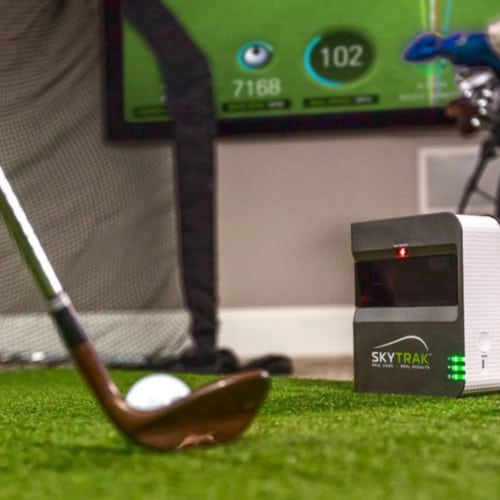
On the other hand, SkyTrak struggles with shot delay, sometimes taking up to two seconds to process data. It also requires paid subscriptions for premium features, making it a pricier long-term option.
Who Should Choose Each One?
Choosing between Square and SkyTrak depends on your experience level, playing environment and budget. Each device caters to different types of golfers, so knowing which one aligns with your needs is key.
Best Choice for Beginners and Casual Golfers
- Square is the better pick for those just getting into launch monitors.
- It offers quick setup, easy navigation and a lower price tag, making it a stress-free entry point.
- The instant feedback and minimal shot delay help beginners understand their swings without waiting.
- GSPro support allows for high-quality simulation without expensive software fees.
Best Option for More Advanced and Serious Players
- SkyTrak provides more reliable shot data and better spin accuracy, making it ideal for those who rely on detailed analytics.
- Its proven technology and third-party software integration offer long-term stability.
- Advanced training tools like bag mapping, shot history and wedge matrix drills make it a strong choice for structured practice.
Suitability for Different Playing Environments
- Indoor Use: SkyTrak excels in controlled indoor spaces, where its camera-based tracking delivers consistent results. Square works well indoors but benefits from proper lighting and marked balls for better spin readings.
- Outdoor Use: Square is an indoor-only device, meaning it can’t be used outdoors. SkyTrak, while mainly designed for indoor play, can work outdoors when set up correctly.
Frequently Asked Questions
Here are a few common questions that our test team has answered to help you make the best choice between the two devices.
Is Square Launch Monitor more accurate than SkyTrak?
Square provides quick feedback and solid accuracy, especially when using marked balls. However, we got inconsistent spin data with unmarked balls. SkyTrak, with a decade of refinement, delivers more consistent spin and launch angle readings, making it the more reliable option for precision data.
Can both launch monitors be used outdoors?
Skytrak can be used outdoors when set up correctly; however, Square was designed for indoor use only, as it can struggle too much with ambient lighting and direct sunlight.
Do I need a subscription to use all features?
Square does not require an annual subscription, but certain software integrations, like GSPro, may have their own costs. SkyTrak offers a basic package, but unlocking advanced features like bag mapping and shot history tracking requires a Game Improvement Plan ($99/year). Full simulation access (E6 Connect, TGC2019) costs extra.
Which device is better for golf simulation?
SkyTrak has more established third-party support, providing access to real-world courses and multiplayer modes. Square integrates with GSPro, a cost-effective alternative with realistic physics and continuous updates. If you prioritize software variety, SkyTrak wins. If you prefer GSPro and avoiding high subscription fees, Square is the better pick.
Neither device matches the high-end accuracy and deep club data tracking of a TrackMan or Foresight GCQuad. However, for home simulators and practice, both Square and SkyTrak deliver excellent performance at a fraction of the price. SkyTrak offers more polished analytics, while Square provides fast feedback and affordability.
Final Verdict
For indoor-only golfers on a budget, the Square Launch Monitor is the better choice. It delivers fast feedback, GSPro compatibility and putting analysis at a lower price. However, it requires marked balls for optimal spin accuracy and lacks outdoor functionality. For a detailed comparison of the Square Launch Monitor with another popular indoor launch monitor, check out our Mevo Plus vs. Square Golf Comparison.
For those who want flexibility indoors and outdoors, SkyTrak is the stronger option. It offers proven accuracy, better spin tracking and broader software compatibility. Though more expensive, it supports premium simulation software and doesn’t require marked balls.
If you’re setting up a dedicated indoor simulator and want a cost-effective solution, our Square Golf Launch Monitor Review found that it is the way to go. But if you need a versatile, accurate launch monitor for both indoor and outdoor use, SkyTrak is the better long-term investment.
If you have any questions or comments, don’t hesitate to contact us. We will do our best to assist you.
Thanks for reading!


